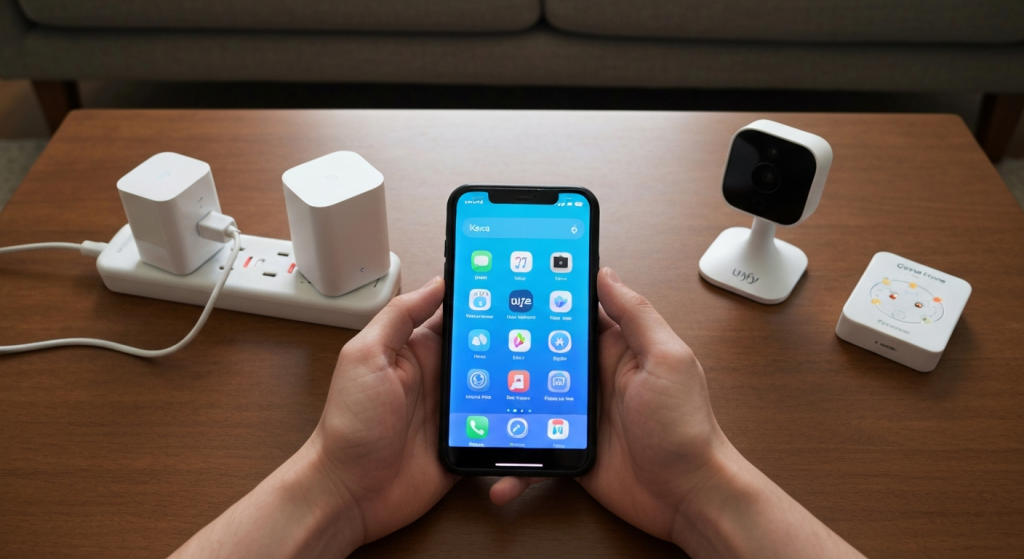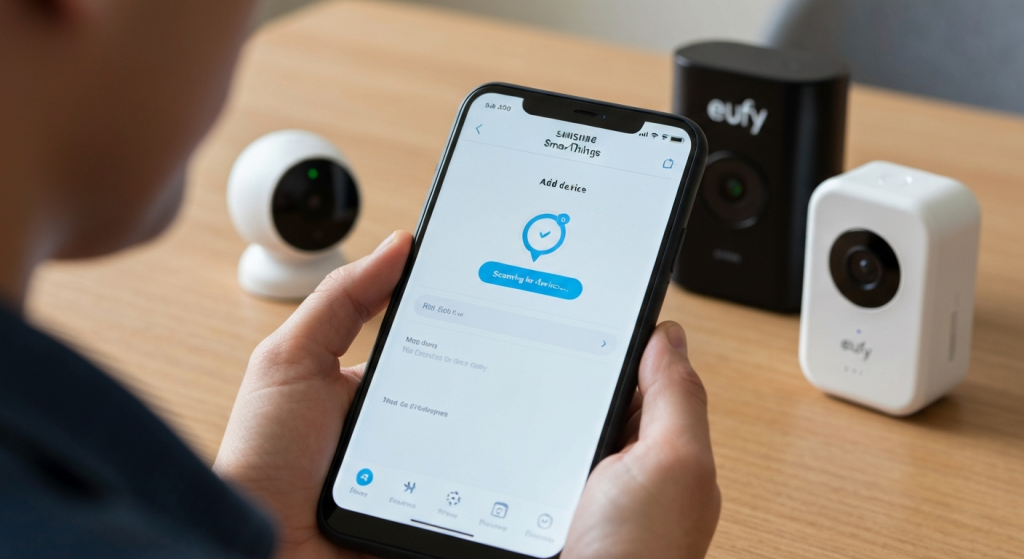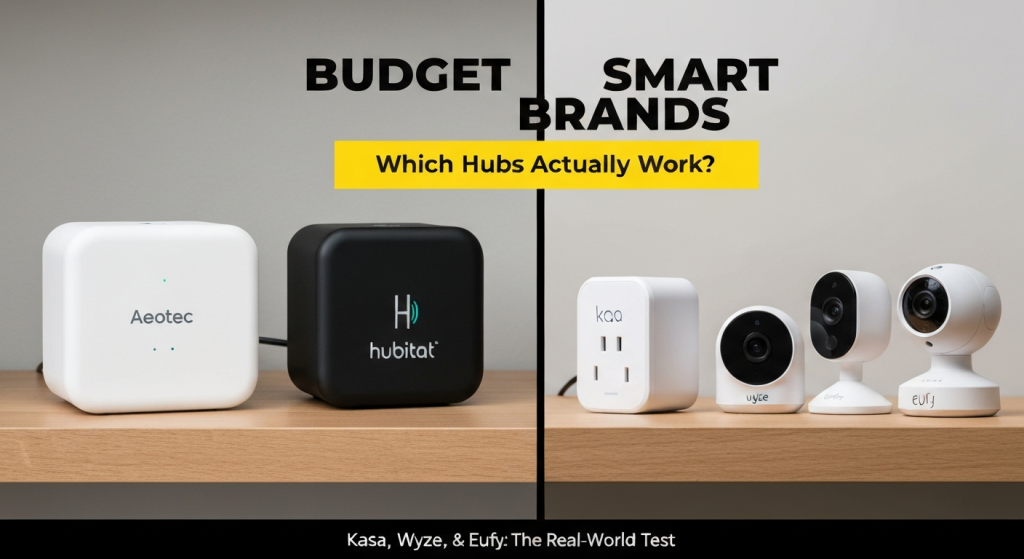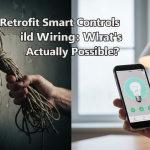We’ve all been there. You grab a budget-friendly smart plug from Kasa or a Wyze cam on sale. It works great with its own app, but then you try to make it “talk” to the Eufy motion sensor you bought last month. Suddenly, you’re stuck in a frustrating maze of incompatible apps, unlisted devices, and commands that just… fail. You start to worry: Did I just waste money on a device that will be useless in a year?
That’s the number one fear for anyone building a smart home on a budget: compatibility. Will this cheap device I’m buying today get “abandoned” by the big ecosystems tomorrow?
Hi, I’m Mahnoor Farooq. I’ve spent the past few years happily obsessed with Smart Home Automation, and my home office is a test lab of hubs, sensors, and smart plugs from just about every brand you can imagine. My main goal has always been to find what actually works without breaking the bank. I’ve learned through research, testing, and a lot of trial and error which systems play nice together and which ones promise compatibility but fail to deliver. I want to share that hard-won knowledge with you, so you can build your system with confidence.
In this in-depth post, I’m going to pull back the curtain on six major smart home ecosystems. We’ll look at how they really handle popular budget brands like Wyze, Eufy, Kasa, Govee, and others. This isn’t about marketing claims; this is about what my hands-on testing has shown.
What Do We Even Mean By “Hub”? (The First Point of Confusion)

Before we can talk about what works, we have to clear up the most confusing term in the industry: the “hub.” You’ll hear an Amazon Echo Dot called a hub, but you’ll also hear a little white box from Hubitat called a hub. They are not the same thing, and this is where most people make their first mistake.
Voice Assistant Platforms (The “Virtual Hub”)
Think of Amazon Alexa and Google Home as virtual hubs or platform managers. They are fantastic at controlling a huge number of devices, especially budget-friendly brands that connect directly to your Wi-Fi.
- How they work: You connect a Kasa smart plug to the Kasa app. Then, you link your Kasa account to your Alexa account (using an “Alexa Skill”). Now you can say, “Alexa, turn on the lamp.”
- The Catch: Alexa isn’t talking directly to the plug. It’s sending a command over the internet to Amazon’s server, which tells Kasa’s server, which then tells your plug to turn on. It’s a cloud-to-cloud connection. This is simple and works well for voice commands, but it’s not great for complex, instant automations.
True Hardware Hubs (The “Traffic Cops”)
Think of hubs like Samsung SmartThings, Hubitat Elevation, or the open-source Home Assistant as the on-site traffic cops for your smart home. Their main job isn’t voice control (though they can link to Alexa/Google for that). Their job is to speak multiple device “languages” locally.
- How they work: These hubs have radios built-in for Zigbee and Z-Wave. These are low-power mesh networks that many sensors, light bulbs, and switches use. They don’t clog up your Wi-Fi.
- The Benefit: When you use a Zigbee motion sensor to trigger a Z-Wave light switch through a Hubitat hub, the command happens inside your house. It’s almost instant and doesn’t rely on three different internet servers being online. This is how you build powerful, reliable automations.
The Ecosystem Lock-in (Apple HomeKit)
Apple HomeKit is a bit different. It’s a highly secure, private, and very fast ecosystem. It’s fantastic. However, it acts like a “walled garden.” For a long time, a device had to be officially certified (“Works with Apple HomeKit”) to even show up. This left almost all budget Wi-Fi brands on the outside, looking in.
Understanding this difference is the key. Are you looking for simple voice control (a “Virtual Hub” is fine) or powerful, local automation (you need a “True Hub”)?
The Great Compatibility Test: Which Budget Brands Play Nice?
For the past few years, I’ve been connecting, disconnecting, and testing automations across all these platforms. Here’s a breakdown of my real-world findings.
Ecosystem 1: Amazon Alexa
This is, without a doubt, the king of budget-brand compatibility. The “Works with Alexa” logo is on almost every Wi-Fi smart device box for a reason.
- Works Great With: Kasa (TP-Link), Govee, Wyze, Eufy, Sonoff (Wi-Fi devices), SwitchBot, and thousands of others.
- The Experience: Linking accounts is easy. I had my Govee light strips and Kasa plugs running with voice commands in under five minutes. My Wyze Cams can stream to an Echo Show. If your goal is to control your cheap devices with your voice, Alexa is the easiest and most reliable starting point.
- The Catch: Automations (called “Routines”) are pretty basic. They are cloud-reliant, so I’ve noticed a slight delay. For example, a Wyze motion sensor triggering a Kasa light has a noticeable 1-2 second pause. Some Echo devices (like the Echo 4th Gen and Echo Hub) do have a Zigbee hub built-in, but I’ve found it’s very basic. It will pair with simple bulbs and plugs, but it’s not a full-featured hub like SmartThings.
Ecosystem 2: Google Home
Google Home (or Google Assistant) is very similar to Alexa. It’s a fantastic voice platform that excels at controlling Wi-Fi devices.
- Works Great With: Kasa (TP-Link), Wyze, Eufy, Govee, and most other major Wi-Fi brands.
- The Experience: Google’s voice recognition is, in my opinion, the most natural. Linking services is simple, just like with Alexa. All my Kasa and Wyze devices show up and respond perfectly to voice commands.
- The Catch: Google’s ecosystem support, while vast, is still slightly smaller than Alexa’s. I’ve found a few obscure budget brands that had an Alexa Skill but no Google Home Action. Also, its automation “Routines” are even more limited than Alexa’s. It’s a great controller, but a weak automator.
Ecosystem 3: Samsung SmartThings

This is where we move into “true hub” territory. SmartThings (which now primarily uses hardware from a partner, Aeotec) is designed to bridge the gap between simple Wi-Fi devices and more serious Zigbee/Z-Wave devices.
- Works Great With: Kasa (TP-Link), Zigbee devices (like many from Aqara and Sonoff), and all Z-Wave devices.
- The Experience: SmartThings gives you real power. I can take a $15 Aqara (Zigbee) motion sensor and use it to instantly trigger a Z-Wave light switch and a Wi-Fi Kasa plug, all in one automation. It also has a “local processing” feature, so many of these automations run even if the internet is down.
- The Catch (This is a big one): SmartThings does not have broad support for Wi-Fi-only camera and security brands. My Eufy cameras? Don’t show up. My Wyze cams? Nope. This is a common dead-end for beginners. They buy Wyze, then buy a SmartThings hub to automate it, and find they can’t.
Ecosystem 4: Hubitat Elevation

This is the hub for power users and privacy advocates. Hubitat’s motto is “local control.” Almost nothing runs on the cloud. It’s fast, it’s reliable, and it’s complex.
- Works Great With: Nearly all Zigbee and Z-Wave devices on the market. This is its superpower. Those unbranded Zigbee sensors? Aqara? Sonoff? Zooz? It will probably find them.
- The Experience: This is where I run my most critical automations (like leak sensors). The speed is incredible because the command never leaves my house.
- The Catch: The learning curve is a vertical wall. And its Wi-Fi device support is the opposite of Alexa’s. It has almost no native support for brands like Wyze, Eufy, or Govee. To get them to work, you have to install community-written code (“drivers”) and sometimes run another server. It’s a project for a hobbyist, not a solution for a beginner.
Ecosystem 5: Apple HomeKit
The walled garden. It’s beautiful inside, but the guest list is very strict.
- Works Great With: Devices that are “Works with Apple HomeKit” certified. This includes some Kasa devices, some Eufy devices, and a lot of Aqara devices (via an Aqara hub).
- The Experience: It is, by far, the fastest and most reliable platform I’ve used. Automations are instant. The privacy is unmatched.
- The Catch: The device selection is tiny and expensive compared to the Alexa/Google world. If you love hunting for budget Wi-Fi deals, HomeKit will be a constant source of frustration. You’ll find yourself buying a $40 plug just because it’s the only one that’s HomeKit compatible, while a $7 Kasa plug sits on the shelf next to it.
The Compatibility Matrix: A “Real-World” Guide
I’ve spent countless hours pairing and unpairing devices. This table isn’t a guarantee (models and software change!), but it’s a solid guide based on my real-world testing.
| Hub / Ecosystem | Kasa (TP-Link) | Wyze | Eufy | Govee | Budget Zigbee (Aqara, Sonoff) |
| Amazon Alexa | Excellent. Full voice control. | Excellent. Full voice & cam streaming. | Excellent. Full voice & cam streaming. | Excellent. Full voice control. | Partial. Only with a Zigbee-enabled Echo. Basic control. |
| Google Home | Excellent. Full voice control. | Excellent. Full voice & cam streaming. | Excellent. Full voice & cam streaming. | Excellent. Full voice control. | No. (Unless the device is also Matter-enabled). |
| SmartThings | Good. Most plugs/switches work. | No. No native support. | No. No native support. | Partial. A few devices have limited support. | Excellent. This is a primary strength. |
| Hubitat | Partial. Requires community drivers. | No. Requires complex, unsupported workarounds. | No. Requires complex, unsupported workarounds. | Partial. Requires community drivers. | Excellent. This is its best feature. |
| Apple HomeKit | Partial. Only specific, marked HomeKit models. | No. (Except for new Matter devices). | Partial. Only specific HomeKit models. | No. (Except for new Matter devices). | Good. Requires an Aqara hub to “bridge” them. |
The “Abandonment” Problem: Why Your Device Might Stop Working
This is the core fear, and it’s a valid one. You’re worried a brand will get “abandoned.” In my experience, this happens in two major ways.
The Cloud-to-Cloud Breakup (The APIcalypse)
Most budget Wi-Fi devices work by a “cloud-to-cloud” integration. The problem is that this connection is just a digital handshake (called an API) that the companies agree to maintain. If one company decides to change its API or end the partnership, your devices stop working together overnight.
A famous example from a few years ago was with Wyze’s original V1 sensors. They were a huge hit, but they relied on a separate bridge. When Wyze discontinued the bridge, the sensors became paperweights. This wasn’t a hub “abandoning” them; the manufacturer did. This is the biggest risk you take with cloud-only budget brands.
The “Unofficial” Integration Fail
This is what I see on platforms like Hubitat and sometimes SmartThings. A clever person in the community will write code that “tricks” Eufy’s cloud service into talking to Hubitat. It’s brilliant, but it’s not supported.
I’ve tried these myself. They work… until they don’t. The moment Eufy updates its app or servers, the integration breaks. The community developer (who is doing this for free) gets tired of fixing it, and your automation is dead.
This is my single biggest piece of advice: If a device doesn’t have native, official support from the hub you want to use, do not buy it. Relying on “community workarounds” is a recipe for frustration.
The Future: Will Matter Fix This Budget Mess?
You’ve probably seen the “M” logo on new device boxes. This is Matter, a new smart home standard that promises to fix this entire mess.
What Matter Promises
The goal of Matter is simple: if your device and your hub are both Matter-certified, they will just work together. No special skills, no cloud-to-cloud linking. A Matter-certified plug from Kasa will talk directly to a Matter-certified hub (like a new Apple TV, Google Nest Hub, or SmartThings Hub).
The Reality (So Far)
I’ve been testing Matter devices, and it’s very promising.
- It’s for New Devices: Don’t expect your 3-year-old Wyze plug to get a Matter update. This is for new hardware you buy moving forward.
- Brands Are on Board: This is the good news. Major budget-friendly brands like Kasa (TP-Link), Eufy, Govee, and SwitchBot are all releasing Matter-certified devices.
- It’s Still Early: The standard is new, and there are still kinks. Not all device types (like cameras) are fully supported by Matter yet.
My take is that Matter is absolutely the future. When you’re shopping for new budget devices, look for the Matter logo. This is the best way to protect yourself from being “abandoned” in the future. For more on the standard itself, the official Connectivity Standards Alliance website is the best source of information.
My Final Verdict: The Best Hub for Budget Shoppers
After all this testing, there is no single “best” hub. It completely depends on your goal.
- For Total Beginners (Simple Voice Control): Start with an Amazon Echo (4th Gen or newer). It has the widest support for Wi-Fi budget brands and includes a basic Zigbee hub for when you want to try your first sensor.
- For Aspiring Automators (The Balancer): Get a Samsung SmartThings (Aeotec) Hub. It gives you the power of Zigbee and Z-Wave and still plays nice with key brands like Kasa, all in a user-friendly app.
- For Privacy & Control Freaks (The Project): If you’re a tinkerer who hates the cloud and wants 100% local control, get a Hubitat Elevation. Just be prepared to only buy Zigbee and Z-Wave devices.
Frequently Asked Questions (FAQs)
- 1. Can I use two hubs at once?Absolutely. I do! I use a Hubitat for all my critical Zigbee/Z-Wave automations. I then link Hubitat to Amazon Alexa, which lets me control all those powerful automations with my voice. They can work together.
- 2. What’s the cheapest way to start?An Amazon Echo Dot (for voice) and one Kasa (TP-Link) smart plug. This will cost very little and show you the power of voice control immediately.
- 3. Do I really need a hardware hub if I only have Wi-Fi plugs?No. If all you have are Wi-Fi devices (like Kasa, Wyze, Govee) and you’re happy with voice control and simple app routines, a hardware hub like SmartThings or Hubitat will be a waste of money for you.
- 4. Will a Zigbee bulb from any brand work with any Zigbee hub?Mostly, yes. That’s the beauty of Zigbee as a standard. I’ve had great luck pairing generic Zigbee bulbs with my SmartThings and Hubitat hubs. This is a much safer bet than mixing Wi-Fi brands.
Conclusion
Building a smart home on a budget is no longer a gamble, but it does require a plan. The key is to stop buying devices randomly and first decide on your “brain.”
If you just want to tell your lights to turn off, an Amazon Alexa or Google Home platform is all you’ll ever need. But if you dream of sensors triggering complex actions instantly and locally, you must invest in a true hub like SmartThings or Hubitat and focus your budget-hunting on Zigbee and Z-Wave devices.
The fear of abandonment is real, but you can avoid it. Choose your hub first, then check its official compatibility list before you buy that tempting smart plug. And when in doubt, look for the Matter logo—it’s the best insurance policy our industry has ever had.


